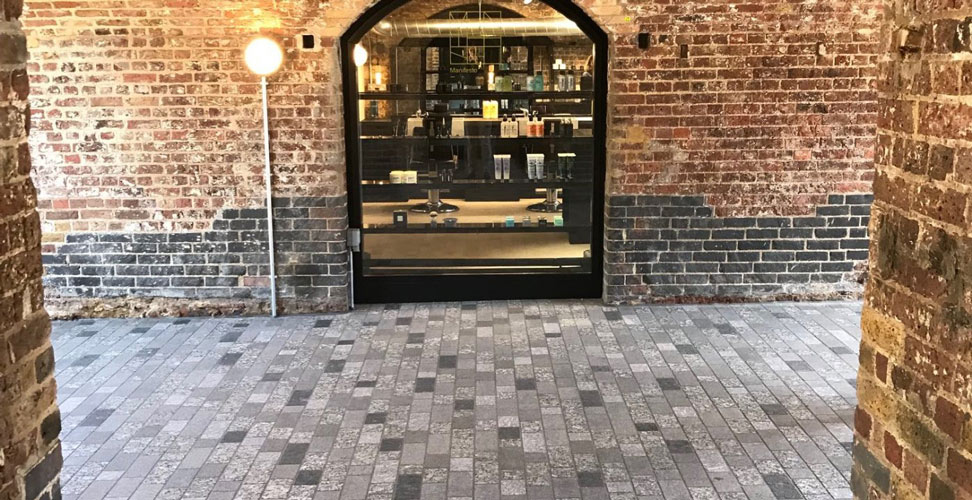Breathing new life into our historic buildings, with the help of fire safety glass
Refurbishing our country’s heritage or listed buildings and ensuring they remain safe and open for people to enjoy can require a careful selection of building materials. In this piece we explore how, if specified correctly, fire safety glass can help to sympathetically compliment historic interiors and provide safety and protection to people.

In the UK, we are fortunate to have many historic buildings on our streets, forming part of our country’s rich architectural history. In fact, it is estimated that there are around 500,000 listed buildings currently on the National Heritage List for England (NHLE). With their rich heritage, many of these buildings still play a current role in our modern-day society, from council and government offices to libraries and schools.
When it comes to our country’s historic buildings, it’s important to not only preserve but also refurbish, helping to bring the building back to life and make it suitable for modern-day use, enabling people to continue to enjoy the space. However, doing so sensitively, without detriment to the building’s history, can present developers, architects and contractors with a real challenge, requiring the careful selection of building materials and systems.
Here, glass can be a great material choice, already loved by architects and building developers for its ability to open up a space and create a light and airy environment. It can also be instrumental in helping to modernise and create a more contemporary look and feel – key when it comes to making our old buildings suitable for 21st century use.
Glass can also prove invaluable in helping to sympathetically integrate and blend the old with the new. For example, part of a refurbishment project may include a new modern extension being added on to the original building. Here, the specification and installation of glass, such as in the form of a glazed wall partition, can help to provide a harmonious link between the two interiors, preventing it from appearing jarring.
Of course, another important thing to consider when refurbishing our historic buildings is ensuring that they are suitable for modern-day use, providing occupants with a safe and comfortable environment in line with current building and fire safety regulations. This can often present architects and specifiers with a very real and potentially complex challenge – even more so if the building is listed, for you can be extremely limited with what you can alter.
For example, when it comes to fire safety glass, the building’s existing frames may be unable to take the thickness or weight of glass required; yet you may be unable to change the frames if it is a listed building. While, if it is a building extension, it’s important to ensure that any new glazing systems remain in keeping with the character of the building, often determining the frames and materials specified.
Ultimately, when it comes to refurbishing the old, project teams face the challenge of having to work around the building, with the building determining what products, materials and systems are installed, rather than vice versa. What’s more, fire safety products, such as fire-rated glass, can present an additional challenge, with the need to ensure that a system approach is taken. Simply taking out the old glass and installing fire-rated glass within an existing frame with no further technical consideration will likely not result in a fire-safe system being created and could have potentially fatal consequences.
Bespoke solutions are often required, which is where technical advice and support from manufacturers can really come into play.
Marr College in Scotland is one such example, being Category B listed and deemed a building of ‘specific historic interest’. With an increased number of students attending the college, achieving improved building circulation was a critical part of the refurbishment. This included turning two outside courtyard spaces into large, multi-use atria.
Working closely with steel fabrication specialists, Martec Engineering – who provided the steelwork within the courtyards, including Schueco Jansen fire-rated glazed screens – Pyroguard supplied a variety of fire-rated glass solutions to sit within the new screens. Acting as minimal secondary glazing, these screens allowed the courtyard’s original 1930’s ‘Crittall’ style metal windows to remain in the spotlight.
With so many historic buildings in our towns and cities, ensuring they remain open for public use should be a priority, helping future generations to continue enjoying our rich architectural heritage. However, making them safe and suitable for modern-day, while refurbishing them in a way that is sensitive to their history, can present developers and architects with a very real challenge. Here, bespoke solutions and expert technical advice, such as those offered by Pyroguard, can be instrumental in ensuring a successful project delivery.
For more information, please contact us.
